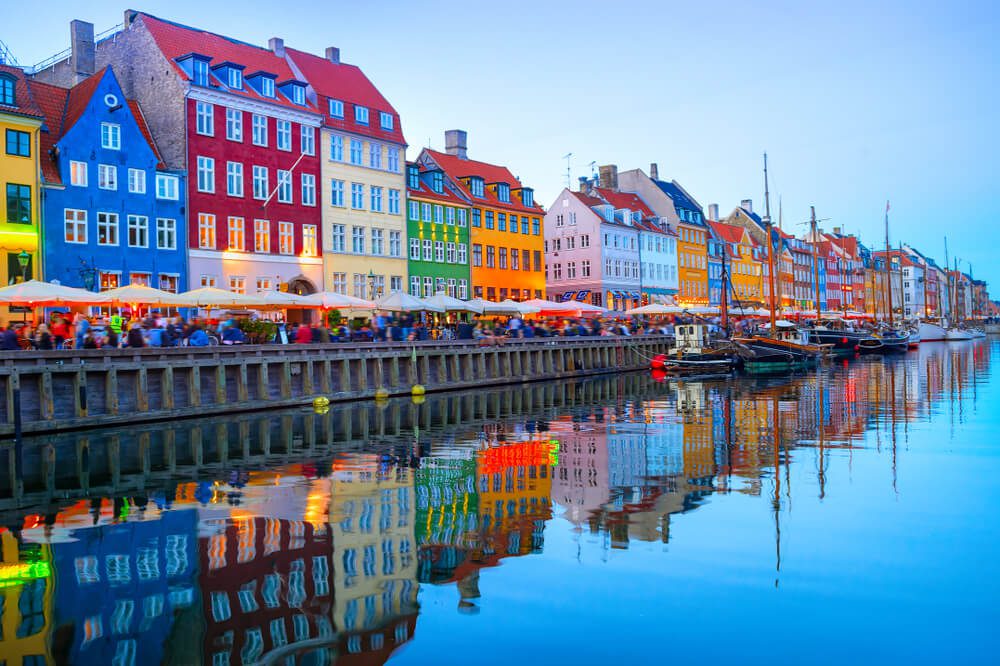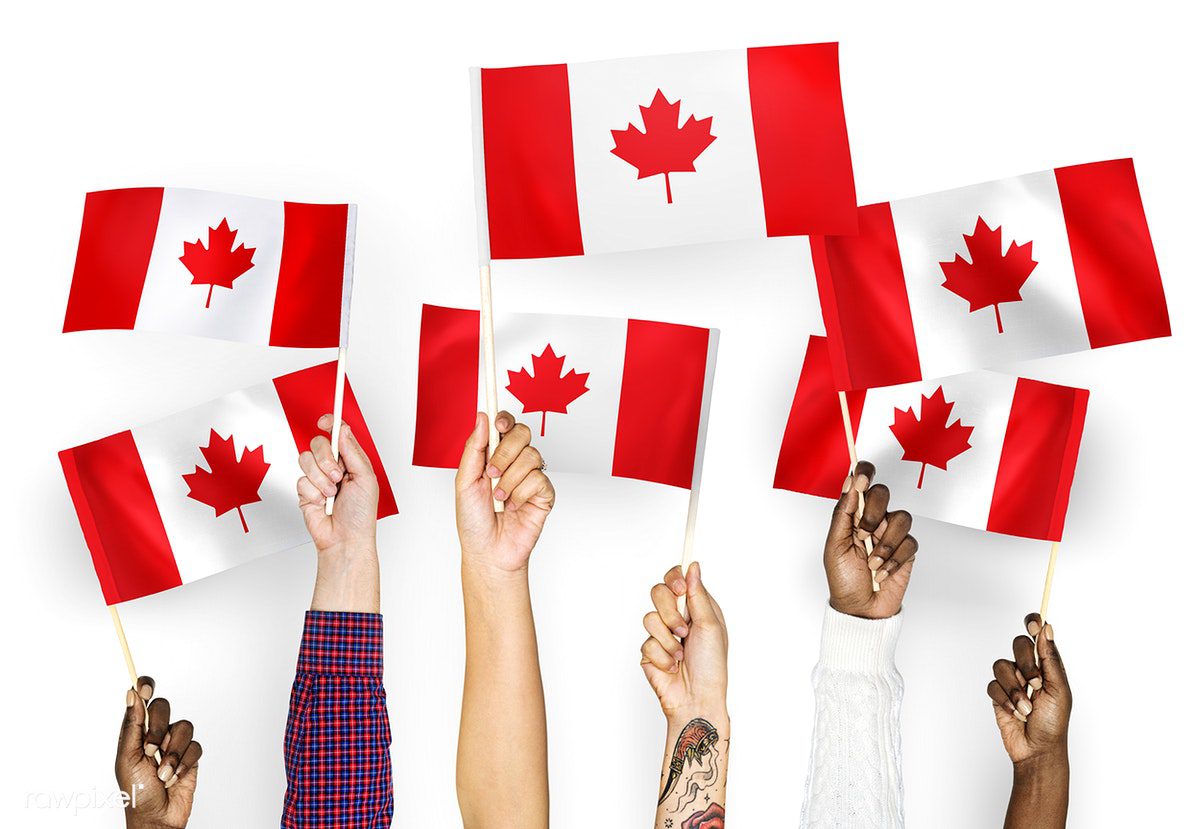People dream of moving to Denmark for its egalitarian society, progressive ideals and focus on design and aesthetics. In Denmark, you’ll find bakeries, high-quality universities and bustling industries. But moving to Denmark isn’t just about buying a plane ticket. This is a relocation guide that will get you started with settling down in Denmark. For info on visas, bank accounts, health insurance and finding a job, read on.
Living in Denmark – Quick Stats:
Before going to Denmark, here’s a snapshot of the country:
- Total population: 5.73 million
- Capital: Copenhagen
- Currency: Krone (KR)
- Total number of ex-pats: 476,000
- Expats from the US: Fewer than 10,000
- Expats from Australia: Fewer than 10,000
- Expats from the UK: 17,000
- Official language: Danish
- Weather: Denmark has a brisk climate. In February, the average temperature is 0°C (32°F) and in July, the average temperature is 17°C (63°F); it’s frequently damp and rainy, and there are no truly dry seasons
- Biggest cities: Copenhagen, Aarhus, Odense, Aalborg
- Average salary: Denmark is a democratically social state, so there isn’t a massive difference between the highest-paid and lowest-paid Dane; the average salary is 20,272 kr per month
Step 1: Figure Out The Legal Requirements to Move to Denmark
It can be difficult to get a permanent residency visa in Denmark if you’re from outside the EU. To enter Denmark, you’ll need a valid passport. As a foreign national, you shouldn’t plan to stay in Denmark for more than 3 months without a visa.
Requirements for Australian Citizens:
Australian citizens will need a visa for a long-term stay in Denmark. Generally, one must have lived in Denmark for 8 years, or worked for 4 at a certain income level, before naturally acquiring a permanent residency card. However, the Danish government has many schemes designed to allow ex-pats to move more easily into the country. For example, the Pay Limit Scheme allows ex-pats into the country who expect an annual salary of at least 400,000kr.
Requirements for EU Citizens:
People from Nordic countries (Norway, Sweden, Finland, Iceland) can freely live and work in Denmark. For EU citizens, the rules are similar, but non-Nordics must apply for a registration certificate within 90 days of arriving in Denmark.
Requirements for American Citizens
Americans moving to Denmark face the same challenges that Australians do. It’s easiest for Americans to move to Denmark as a student, an employee, or as a spouse or partners of a Dane.
Requirements for UK Citizens:
UK citizens in Denmark have the same rights as EU citizens.
Requirements for Students:
Students in Denmark from the EU/EEA area or Switzerland only need to secure a place on a course at a Danish university. Students from outside the EU should apply for student visas. This visa is straightforward and can be obtained with proof of ID and an acceptance letter from a Danish university. A student visa will last the length of the academic year.
Step 2: Make Sure You Can Afford The Cost of Living in Denmark
Denmark is known to be expensive but is comparable to other Western European nations in terms of cost of living. As it stands, the krone is worth approximately:
- €1 = 7.5 kr
- £1 = 8.3 kr
- $1 = 6.29 kr
Here are some standard costs to help plan your budget in Denmark:
- Rent, per month, one bedroom outside the city centre – 5,000kr
- Rent, per month, one-bedroom in the city centre – 7,000kr
- Casual lunch for two, including wine – 600kr
- 1 pint of beer – 45kr
- Utilities, per month – 1,220kr
- Fitness club membership, per month – 235kr
- 1 pair of jeans – 685kr
- One-way ticket on local transport – 23kr
- Monthly transport pass – 378kr
- One gallon of milk – 25kr
- One loaf of bread – 14kr
Step 3: Set Up Your Finances in Denmark
Denmark is an ex-pat hub, which means that opening a bank account as a foreigner is straightforward. Each bank has its unique policy. To open a standard account, you’ll need your photo ID, proof of address and proof of your employment or student status. You’ll also need a CPR number, which is issued along with your residence permit. Without a CPR number, you can’t open a Danish account.
If you already have an account with an international bank, they may operate in Denmark. If they do, you should be able to open an account and conduct simple transactions online.
Once you’re set up in Denmark, you may want to transfer money into and out of your Danish account from your home country. You can save money on foreign currency transactions through Wise. The result of transactions with banks and exchange companies is often a poor exchange rate and hidden charges. For the real exchange rate, the same one you find on Google, use Wise to move your money. With the Wise Borderless account, you can store and manage money in dozens of currencies, which makes bill-paying easy and cost-effective.
Step 4: Find a Job and Get to Work in Denmark
Would You Like To Apply For This Jobs/Sponsorship?
Enter Your Email Address HERE & You Will Receive a Notification About Your Application. If it shows "Subscribed" CLICK HERE to follow on Telegram for updatesIt’s important to speak Danish if you want to get a job in Denmark. All government jobs require Danish fluency, and 40% of the jobs in the country are government-provided. Being fluent in English won’t guarantee that you’re seen as special since most Danes are also fluent. The best way to find a job without speaking Danish is through an engineering or tech job. The more specialised you are in a field, the better.
To get started, here are a few job-search resources in Denmark:
Step 5: Get a Place to Live in Denmark
Finding housing in Denmark can be expensive. It’s recommended that you rent before buying a property. The most popular areas to live in Denmark are its largest cities: Copenhagen, Aarhus, Aalborg and Odense. The north of Copenhagen is more expensive than the south. It’s easier to find housing if you have a residency permit since many agencies and landlords will request your CPR number.
Apartments for rent are called lejelejlighed. These types of rentals are small and are sought-after in Denmark because they’re the cheapest. Sometimes they have shared communal space. Raekkehus are also sought-after rentals; they’re terraced houses that are larger than most apartments and have small private gardens. To rent property, you’ll have to pay three months of rent upfront as a deposit. You’ll also need to pay this amount through a bank transfer. Most leases run for one year, and there are rental agencies to help you that specialise in dealing with letting ex-pats. You should expect to sign a rental contract between yourself and the landlord.
Start your housing search online through the following websites:
Step 6: Make Sure Your Healthcare is Covered in Denmark
Denmark has some of the highest quality healthcare in the world. Individuals can choose from a range of medical facilities that cover most medical services. Denmark operates through a universal healthcare system, which means that all citizens have access to it.
Public hospitals provide medical treatment for all citizens. EU citizens are also entitled to free healthcare, as long as they provide proof of their European Health Insurance Card. Supplemental care can be provided for citizens who prefer to pay extra for private care.
Expats from outside the EU are entitled to free emergency health care but will need international health insurance for routine medical care. Permanent residents can register with Citizens Services, at which point they’ll receive an ID number and a health insurance card.
To find a doctor, look for the list provided by the National Registration Office. You’ll see doctors’ names and addresses on this list. Most people ask neighbours or friends for a recommendation. You should make an appointment with a GP before you see a specialist. Also, most Danes speak English, so you can safely assume that your doctor is likely to speak English.
Step 7: Learn The Language
If you move to Denmark as the spouse of a Dane, you’ll have to take a language proficiency test 6 months after you arrive. You’ll want to make sure you brush up on the basics of speaking Danish.
Many people find it easy and accessible to learn Danish online. Duolingo and Babbel are the most popular platforms. You can also use the more personalised platform SpeakDanish.
In person, you can explore courses at higher education institutions and adult learning centres. Programmes are often offered by the local council (the commune) or certain high schools in the region where you live. Additionally, look into private language teachers and classes. Note that the government provides free Danish courses to anyone with a residency visa.
Step 8: Make Sure You’re Prepared With Important Contacts in Denmark in Case of an Emergency
The following are numbers and departments that you can contact in case of an emergency:
- Ambulance, police and fire services – 112
- Non-emergency police – Dial 14
- Ministry of Foreign Affairs in Denmark
- British Embassy in Denmark
- Australian Embassy in Denmark
- US Embassy and Consulates in Denmark
- Canadian Embassy in Denmark
Denmark has a relaxed and enjoyable pace of life. It’s a country which takes great care of its residents and provides a strong work-life balance. A Relocation to Denmark requires planning but is sure to be well worth it.






